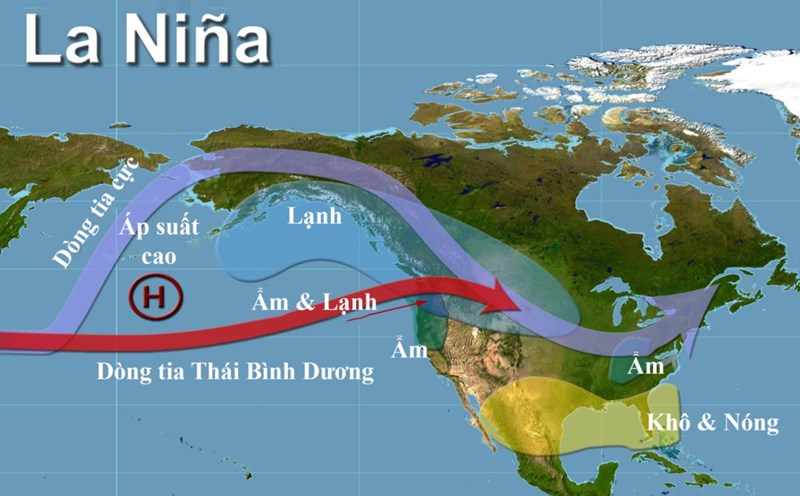Last week, the European Union's Copernicus Climate Change Service (C3S) reported that the record temperatures came despite the ongoing La Nina phenomenon in the tropical Pacific Ocean, and the temporary cooling effect of La Nina has an impact on global temperatures.
January 2025 was the 18th month in which the global average temperature exceeded 1.5 degrees Celsius. Scientists predicted that the arrival of La Nina in December 2024 would help ease the heat. However, this did not happen.
La Nina is one of three phases of the phenomenon known as El Nino - Southern Oscillation (ENSO), a climate phenomenon characterized by changes in sea temperatures across the central and eastern tropical Pacific Ocean, accompanied by fluctuations in the upper atmosphere. ENSO impacts, alters and interferes with global atmospheric circulation, thereby influencing weather around the world.
ENSO has three phases - warm (El Nino), cool (La Nina) and neutral - occurring in irregular cycles of 2-7 years.
During the neutral phase, the eastern Pacific Ocean (near the northwest coast of South America) is cooler than the western Pacific Ocean (near the Philippines and Indonesia). During an El Nino phase, the eastern Pacific Ocean is warmer than normal. The opposite occurs during a La Nina phase.
Global temperatures rise during El Nino but fall during La Nina. However, regional effects are more complex and some places may be warmer or cooler than expected at different times of the year.
The current La Nina cycle is expected to be weak. This may be due to the fact that La Nina has been delayed in its development. Experts believe that La Nina could have formed in September 2024 but it eventually appeared in early January 2025.
“ENSO events peak in the Northern Hemisphere winter, leaving little time for La Nina to strengthen,” the National Oceanic and Atmospheric Administration (NOAA) reports. A weaker La Nina typically has a weaker impact on temperatures and precipitation.
Furthermore, according to a report published by The Conversation, despite the presence of La Nina, the rate of increase in the amount of heat-trapping carbon in the atmosphere in 2024 and January 2025 is still higher than the already high levels of previous years. Typically, a strong La Nina leads to more rain, which helps plants grow more. This in turn leads to plants absorbing more carbon from the atmosphere.
Decreases in atmospheric particulate matter levels due to clean air policies implemented in some regions may also play a role in keeping temperatures warmer. In general, these particulates have a cooling effect because they scatter solar radiation back into space. They also influence cloud formation, which in turn affects how much sunlight is absorbed or reflected.
Experts say the exceptionally warm month of January 2025 is unlikely to predict the long-term course of the planet’s weather patterns. But it does indicate that the ability of natural cooling periods to temporarily lower global temperatures may be waning.
The only way to prevent this from happening is to drastically reduce greenhouse gas emissions. In 2024, greenhouse gas concentrations in the atmosphere are expected to reach their highest level on record, according to the Copernicus Climate Change Service.











